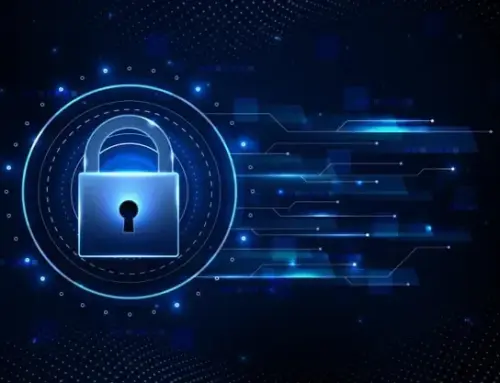
What is Malware? Removal and Prevention
What is Malware? Removal and Prevention
Malware, which is an abbreviation for “malicious software,” is any software that is purposefully designed to do damage to a computer, server, client, or system that is connected to a computer network.
All of these malicious programs, including viruses, worms, Trojan horses, ransomware, spyware, and adware, are included in this category.
Core computing operations can be stolen, encrypted, deleted, altered, or hijacked by malware, and it frequently spreads itself across networks and devices. Malware can also steal data.
1. What is one prevention method for malware?
Malware may be prevented with antivirus software. Malware detection, prevention, and removal are the functions of antivirus software. It scans files and programs for dangerous software that could harm the system or jeopardize data security.
The software employs a database of existing malware signatures and heuristic analysis to detect new viruses based on behavior and file attributes.
Updating antivirus software keeps it up to date on malware risks. Regular complete system scans and real-time protection can also help prevent malware attacks.
2. How to prevent computer viruses?
Multilayered cybersecurity is needed to prevent computer viruses. First, install and update reliable antivirus software to identify and eliminate infections.
These tools detect threats in real-time using viral signatures and suspicious activity. Second, updating the operating system and applications patches security holes, minimizing the danger of viruses exploiting them.
Third, refrain from clicking on strange links, downloading attachments from unfamiliar sources, and visiting untrustworthy websites.
Use strong, unique passwords and enable firewall protection to further safeguard your PC from viruses. Backups of essential data also protect against viruses.
3. How to prevent spyware?
Spyware prevention requires software and internet safety. First, install and update strong antivirus or anti-spyware software to identify and eliminate spyware.
These apps can detect and remove spyware and protect against emerging attacks in real-time.
Maintaining your operating system and installed applications is also important because updates often include security patches that fix spyware vulnerabilities.
Additionally, safe browsing is essential. Do not click on strange links, download files or software from unfamiliar sites, or open email attachments from unknown senders.
What is Malware? Removal and Prevention
Malware is software or malicious code that is specifically designed to gain access to an end-user machine or network.
Malware, short for “malicious software,” is software meant to harm a computer, server, client, or network.
This comprises malware including viruses, worms, Trojan horses, ransomware, spyware, and adware. Malware can secretly steal, encrypt, erase, change, or hijack core computing functions, and spy on users.
Attackers try to steal data or information, damage devices, and make money by compromising the victim’s device.
Types of Malware
- Virus
- Trojan:
- Spyware:
- Worms:
- Ransomware:
- Adware:
1. Virus
Virus is a type of programming that can copy itself onto machines. It performs suspicious tasks, destroys the data, and corrupts the files.
The Virus shows up as an executable file (.exe). This is a sort of malicious software that infects files with harmful code by attaching itself to files that are clean and then spreading throughout a computer system without being detected.
Viruses are a kind of malware that, when run, can alter and insert their code into other programs to replicate themselves.
Some examples of infected computer programs are files, system programs, and the boot section of the hard drive. A computer virus is said to have “infected” the affected locations after this replication succeeds.
2. Trojan:
It is one of the most common malware that is hidden in legitimate software.
Once it is established in the PC, attackers access the information such as credentials, system details, banking details, and more.
It also enables attackers to modify the victim’s data and it automatically turns off anti-malware protection.
Malware that masquerades as useful programs is known as a Trojan or Trojan horse. Trojans aren’t able to proliferate like worms or viruses, yet they’re just as harmful.
Trojan horses, so-called because they resemble the misleading wooden horses in Greek mythology that brought down the city of Troy, fool users into installing malicious software by making it seem like a helpful or appealing tool on the surface.
3. Spyware:
Spyware is a kind of software that is used as a spy camera.
It works in the hidden background and tries to steal people’s data such as passwords, credit card numbers, bank details, and many more.
Most parents use this software /tool to check their kid’s activities and sometimes monitor their internet activity.
Spyware is a kind of malware that secretly gathers and sends sensitive user data from their computer without their knowledge or permission.
To avoid detection, it is typically installed covertly on a user’s device.
4. Worms:
The worm is a type of malware that infects the entire network, local or across the region.
Attackers are used to gain access to end-user devices. It spread from one machine to another.
Worms are malicious software that may duplicate and propagate to other computers and networks on their own, usually without the user’s knowledge or consent.
Worms are independent programs that may replicate without a host program or human intervention, in contrast to viruses that propagate through infected host files.
5. Ransomware:
This type of malware encrypts user’s information by sending them email attachments.
The Machine displays some pop-up windows that lock the user’s machine and ask them for some ransom.
Attackers trick the victim by sending them malicious attachments as a legitimate file and after clicking on that file, it locks down the computer or the files and threatens the victim to remove all important documents and ask for some ransom money.
6. Adware:
This is the most common type of attack Or we can say the easiest way to make money.
The easy way for malware to come into your device is by clicking on pop-up window advertisements.
Pop-ups are irritating. This malicious software, known as “advertising-supported software,” is designed to display advertisements without the user’s knowledge or consent.
Although it’s not as dangerous as other forms of malware, it can still cause problems and be a nuisance.
Removal:
To remove malware from your device, Use anti-malware software, generally known as antivirus.
We can use advanced antivirus tools too to remove malware. Here are general steps to follow for malware removal:
- Disconnect from the Internet
- Enter Safe Mode
- Back-Up Important Files
- Run a Malware Scan
- Review the Scan Results
- Use a Malware Removal Tool
- Check Browser Extensions
- Clear Temporary Files
- Restore Your Computer
Protection:
About malware, prevention is always better than cure.
- The device should be up-to-date
- The software should be patched.





